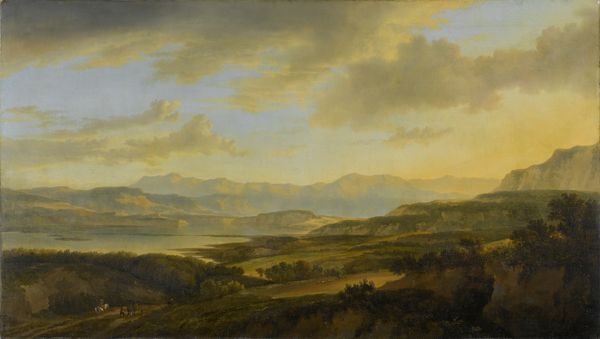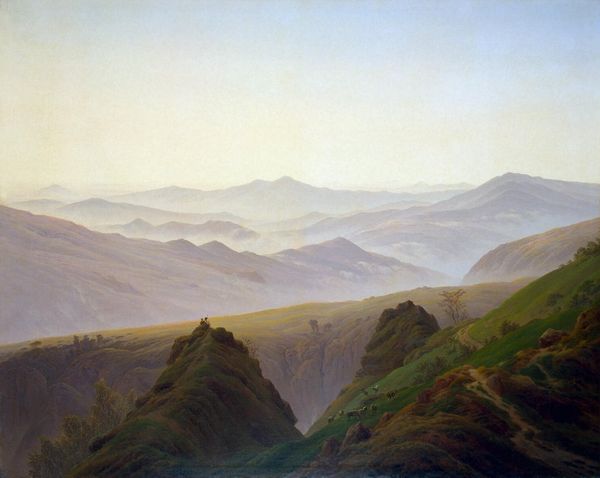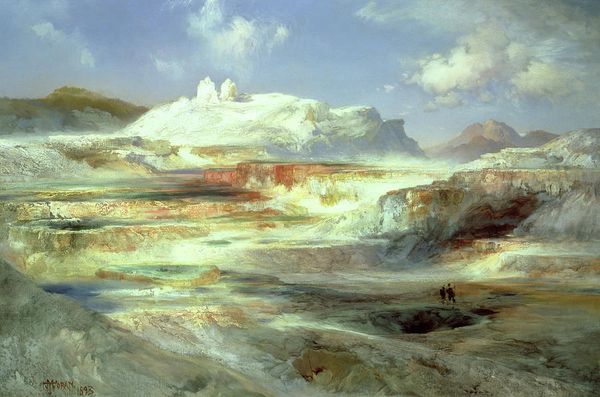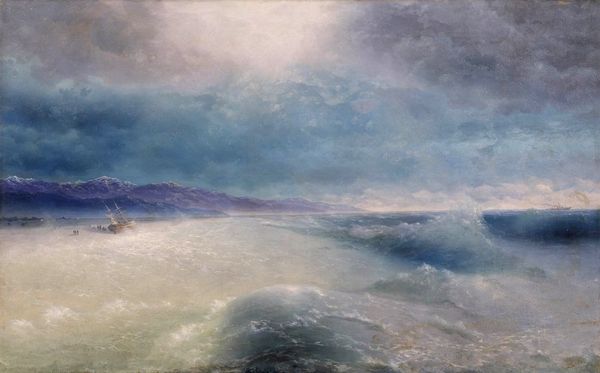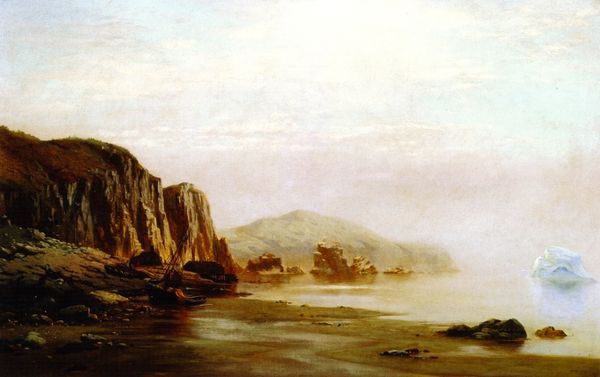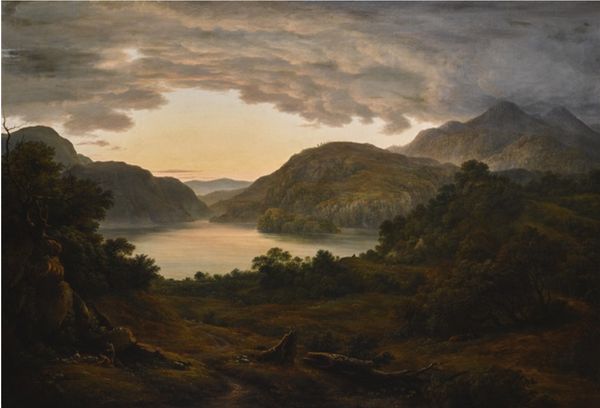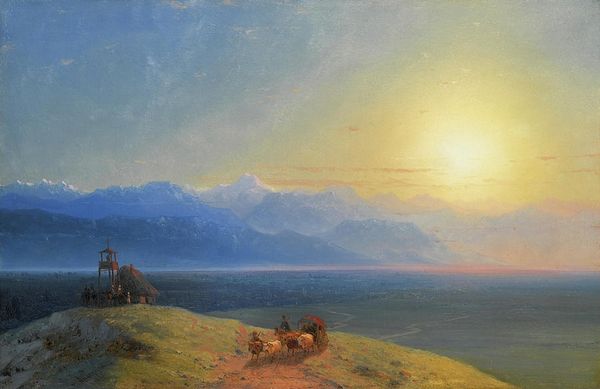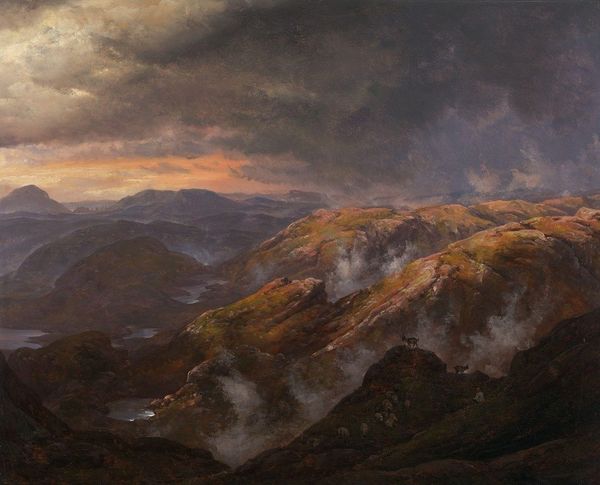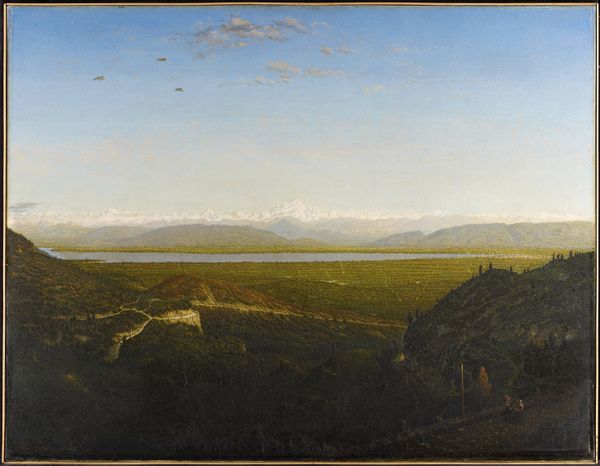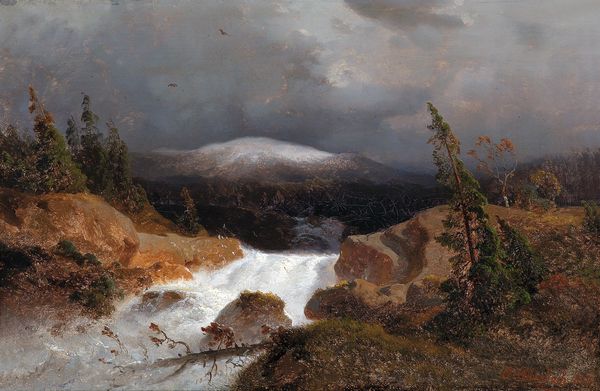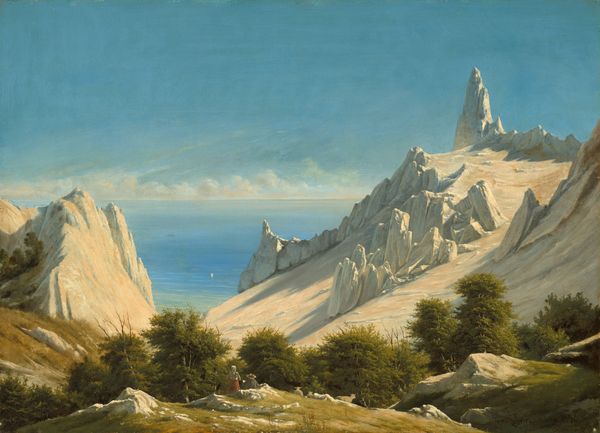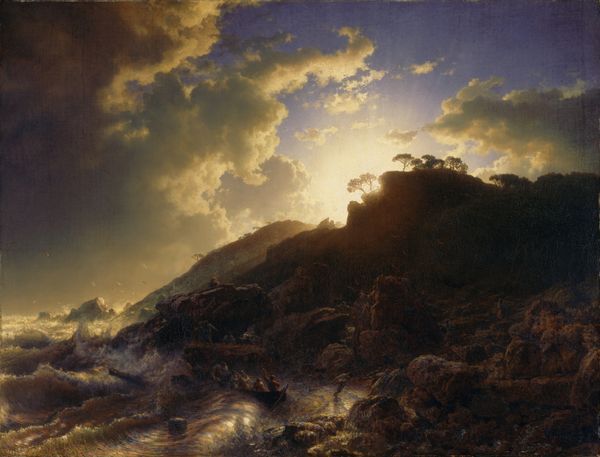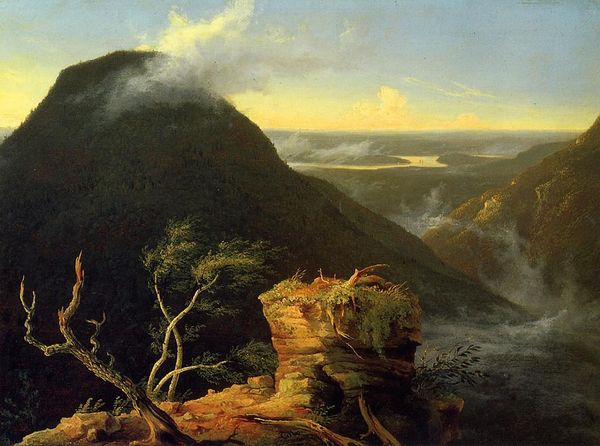
Dimensions: 306.7 x 198.8 cm
Copyright: Public domain
Curator: John Martin's “The Plains of Heaven,” created in 1853 using oil paint, offers a fascinating insight into the artistic interpretation of religious themes within the context of 19th-century Romanticism. Editor: My first impression? It's overwhelmingly…ethereal. Almost a hazy, dreamlike landscape with those hazy mountains. The bright blues and browns and the contrast with darker lower edges—it feels designed to inspire awe. Curator: Martin was a master of creating immense, awe-inspiring scenes that blended historical painting with landscape. It speaks to a moment in the public sphere where religious belief started intertwining with the grandiosity of nature. The work presents this vision of paradise where, figures are emerging from bright cascading waterfall flowing towards a beautiful, tranquil lake in the distance. Editor: Exactly, the romantic undertones, and especially because it seems to wash away any earthly sin, painting an idyllic view of Christian allegory. And look how diminutive the figures are! Reduced against this magnificent vista of nature; like they were never relevant. The intersection of religion, Romanticism and an increasing societal insignificance… it resonates powerfully today. Curator: You touch on a really interesting point. The public’s relationship with religion was evolving during Martin's time. The figures aren’t necessarily incidental; it's the sublime power of divine promise that Martin is trying to reflect. Also the distribution, placement, and grouping together helps to move the eye into this paradise setting. Editor: I can respect that read of his technique, and I would say it falls inline with what art history teaches, that society, history, culture are what drives the art and not always artists internal emotionality. Still, with how diminutive those figures are. Who exactly did the heaven belong to then? Perhaps its designed to speak about the increasing population numbers in cities, during the early modern times? Curator: Martin often used scale to explore the relationship between humanity and forces much greater than itself; forces like history and nature. In this sense, ‘Plains of Heaven’ can be thought to echo earlier pieces like "The Great Day of His Wrath", in which God also makes the environment around smaller. Martin created paintings, designed as theatrical works for public consumption. This wasn't simply about inner life, but the spectacle and wonder of shared faith and belief. Editor: True. We often forget the degree to which art served as public spectacle before modern media took over. Seeing it in that context, I begin to see this not as mere devotional expression, but as a cultural attempt to create social cohesion around dominant ideologies. Very interesting to unpack and place inside the cultural norms of his world. Curator: I am glad to see your views broaden, taking in this contextual, history angle I was looking for you to achieve. Thank you for that. Editor: It makes a far better and even clearer understanding of society, with that lense used as focus! Thank you for bringing to light John Martin’s creation today, its opened up so many social doors for me.
Comments
No comments
Be the first to comment and join the conversation on the ultimate creative platform.
